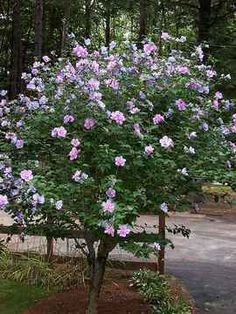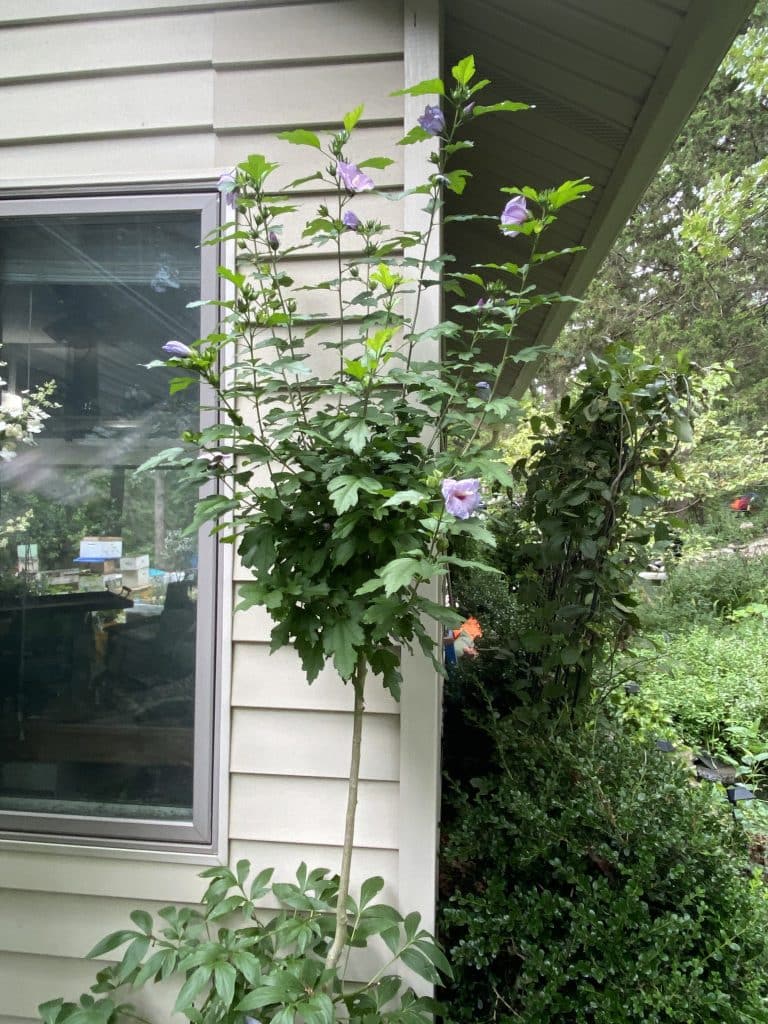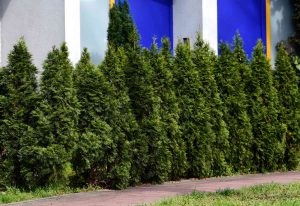Welcome to our comprehensive guide on How to trim a Rose of Sharon tree. Rose of Sharon trees enhance any scene with their bright blossoms and graceful stature. However, regular maintenance is essential to their health and longevity. In this tutorial, we’ll walk you through the step-by-step process of trimming your Rose of Sharon tree, from determining the best time to prune to tactics for promoting maximum growth and flowering. Our simple guidelines will assist you in maintaining a beautiful and well-kept Rose of Sharon tree, regardless of your gardening experience. Are you considering removing a magnolia tree from your property? Look no further for experienced guidance. Despite their beauty, magnolia trees may occasionally require removal due to disease, damage, or landscaping restrictions. This tutorial will examine the reasons for magnolia tree removal, the steps involved in the process, and potential challenges you may encounter. With this information, you’ll be able to make informed decisions about the maintenance and management of your landscape. Let’s go on this road together.
About the Rose of Sharon Tree
The Rose of Sharon tree, also known as Hibiscus syriacus, is a magnificent deciduous shrub native to Asia. The name is derived from a scriptural passage in the Song of Solomon. It blooms in late summer and early fall, bringing a burst of color to gardens and landscapes. The flowers come in a variety of colors, including white, pink, purple, and blue, attracting pollinators like bees and butterflies. It flourishes in both sunny and somewhat shaded settings since it is adaptable to a variety of soil types and temperatures. Beyond its ornamental appeal, the Rose of Sharon is significant in numerous cultures, representing beauty, resilience, and even hospitality. Its beauty and adaptability have made it a popular addition to gardens all over the world.

When should you trim the rose of Sharon trees?
The best time to trim a Rose of Sharon tree is in late winter or early spring before the new foliage appears. Pruning can occur during the dormant season without causing the tree undue stress. Trimming during this time helps shape the tree, remove dead or damaged branches, and promote healthy development and abundant flowering throughout the growing season. Avoid cutting Rose of Sharon trees in late summer or fall, as this might stimulate new growth that may not mature in time for winter, thereby leaving the tree more sensitive to cold harm. Before pruning, consider your tree’s demands and the local climate. Remember to use sharp, clean tools to make precise cuts and reduce the danger of disease spreading.
Benefits of Trimming the Rose of a Sharon Tree
Encourages healthy development: Regular trimming of Rose of Sharon trees removes dead, damaged, or diseased branches, allowing the tree to better devote its resources to new growth.
Improves aesthetics: Pruning shapes the tree, keeping it in its ideal shape and structure. This encourages a nice and tidy appearance, which improves the overall beauty of the landscape.
Stimulates flowering: Proper pruning promotes the formation of flower buds, resulting in more plentiful and vivid blooms during the flowering season. Removing old wood promotes the growth of new shoots, which frequently produce blooms.

Enhances air circulation: Pruning removes congested branches, which enhances air circulation within the tree canopy. This lowers the danger of fungal diseases and improves overall tree health.
Remove weak or overextended branches: Trimming eliminates weak or overextended branches that may break during storms or severe winds, lowering the risk of damage to the tree and nearby property.
Increases sunlight penetration: Pruning breaks up the canopy, allowing more sunlight to reach the tree’s inner branches and lower portions, resulting in improved photosynthesis and overall health.
Trimming a Rose of Sharon tree requires the proper tools, steps, and some helpful hints to achieve a healthy and visually acceptable result.
Tools needed:
Pruning shears are essential for clipping tiny branches and offshoots.
We use loppers to cut heavier branches that pruning shears cannot handle.
A handheld pruning saw is useful for cutting bigger branches.
Gloves protect your hands from thorns and cuts.
While cutting, wear safety glasses to protect your eyes from particles.
How to trim the Rose of Sharon tree:
Step-by-step guide
Assess the tree: Assess the tree’s health and structure. Identify dead, damaged, or diseased branches to remove.
Begin with deadwood: Use pruning shears to remove dead or damaged branches. Cut the root or the closest healthy bud. To increase airflow and sunshine penetration, thin out overcrowded branches crossing, rubbing, or growing inward.
Balanced shape: Prune to keep the tree in a balanced shape. Trim lengthy branches to promote a more compact shape.
Remove Suckers: Snip suckers that emerge from the base of the tree to keep them from sapping nutrients.
Check for crisscrossing branches: To avoid future growth problems, remove branches that overlap or wind around one another.
Final Touches: Take a step back to analyze your development and maintain a balanced appearance from time to time
Tips:
Trim during dormancy, in late winter or early spring, before new growth starts.
Use Sharp Tools: Sharp tools produce cleaner cuts, lowering the risk of injury and disease.
Avoid stress: To avoid stress, prune conservatively by eliminating no more than one-third of the tree’s total growth in a single trimming session.
Monitoring growth: To keep the tree in shape and healthy, assess it for new growth regularly and trim it as needed.
Waste disposal: To avoid pest and disease spread, remove all pruning waste.
Follow these methods and advice to trim your Rose of Sharon tree, promoting its health, beauty, and lifespan.
How often should I trim my Rose of Sharon tree?
You should trim your Rose of Sharon tree once a year to keep it healthy and attractive. Regular pruning removes dead, damaged, or diseased branches, improves air circulation, and promotes new growth. Trimming frequency, however, might vary based on the tree’s growth pace and condition. To keep your tree in good health, inspect it regularly and prune it as needed. Trim your Rose of Sharon tree every year to guarantee that it remains vibrant and lovely year after year.
Will trimming my Rose of Sharon tree affect its blooming?
Trimming your Rose of Sharon tree should not have a significant effect on its flowering ability. Correct trimming can improve blooming by increasing air circulation and stimulating new growth. Removing dead or overgrown branches allows more sunshine to reach the remaining branches, potentially resulting in more abundant flowering. Avoid trimming during the flowering season to prevent damage to potential flower buds. Excessive pruning might also stress the tree and cause it to blossom less frequently. Trim your Rose of Sharon tree in late winter or early spring, before new growth starts. Follow these instructions and practice regular pruning to ensure that your Rose of Sharon tree produces a healthy and brilliant display of flowers year after year.
Related Posts:
Maintenance tips
After cutting, here are some tips for keeping your Rose of Sharon tree healthy and thriving:
Water: Ensure the tree receives enough water, especially during dry spells. We prefer deeper irrigation over shallow watering as it fosters deep root growth.
Fertilize: Use a balanced fertilizer to encourage growth and blooming in early spring. Choose a fertilizer designed exclusively for flowering shrubs and apply it according to the manufacturer’s directions.
Mulch: Mulch around the tree’s base to preserve moisture and suppress weeds. Apply a 2- to 3-inch layer of organic mulch, such as wood chips or shredded bark, but keep it several inches away from the trunk to avoid rot.
Monitor: Check the tree regularly for pest or disease symptoms, and take appropriate action if necessary. Watch for wilting leaves, strange patches or growths, and insect activity. Prune any afflicted branches, and use organic pest management measures if needed.
By incorporating these management ideas into your routine, you can help your Rose of Sharon tree grow and enhance your environment for years.
FAQS
How much should I prune my Rose of Sharon tree?
When trimming your Rose of Sharon tree, remove any dead, damaged, or diseased branches, as well as any branches that cross or are overloaded. Aim to keep the tree’s original shape while increasing airflow and sunlight penetration.
Can I shape my Rose of Sharon tree?
You can shape your Rose of Sharon tree by deliberately pruning branches, to achieve the desired appearance, Just be careful not to over-prune the tree, since this might stress it and harm its overall health.
How can I determine whether a branch is dead or diseased?
Dead branches are typically brittle and absent of leaves or buds, but diseased branches may exhibit discoloration, aberrant growth, or pest activity. Inspect your tree regularly and instantly remove any questionable limbs.
Conclusion
How to trim a rose of Sharon tree is essential for keeping it healthy and attractive. Following the strategies in this tutorial will ensure that your tree remains alive and gorgeous year after year. Remember to prune your tree in late winter or early spring to remove dead, damaged, or diseased branches, any that are crossing or overloaded. Shape the tree as desired, but avoid over-pruning, which can cause stress and harm the tree’s overall health. With proper upkeep and care, your Rose of Sharon tree will continue to provide value to your environment for many seasons.





